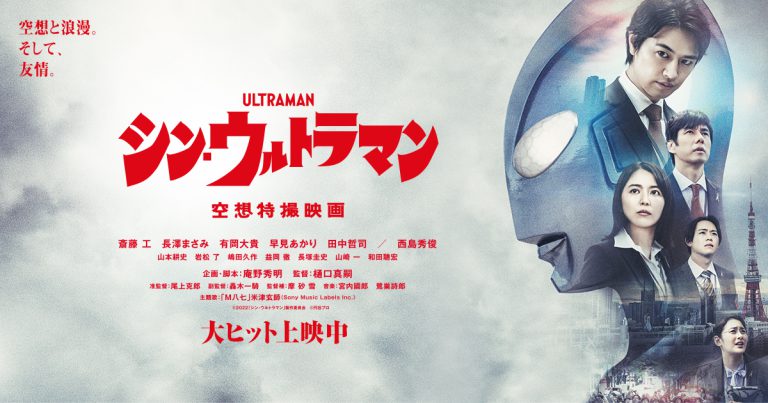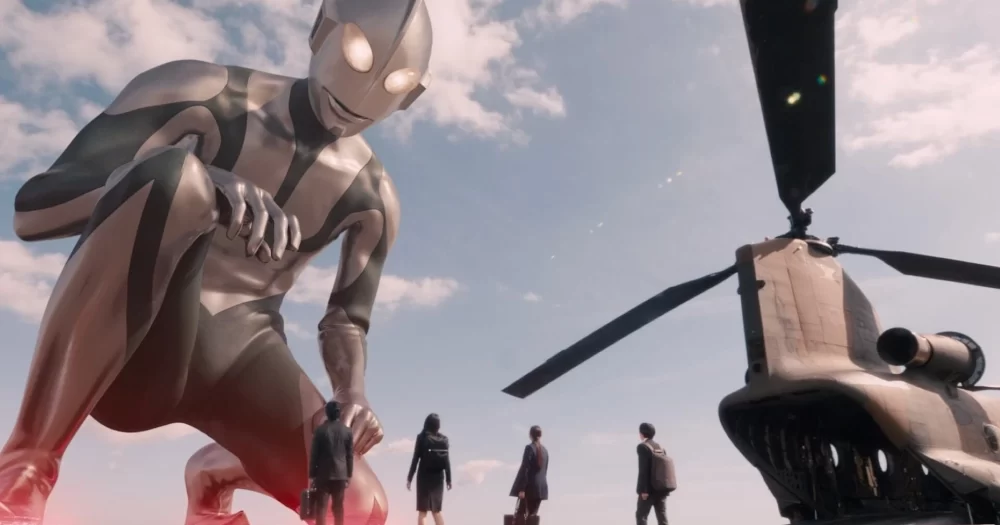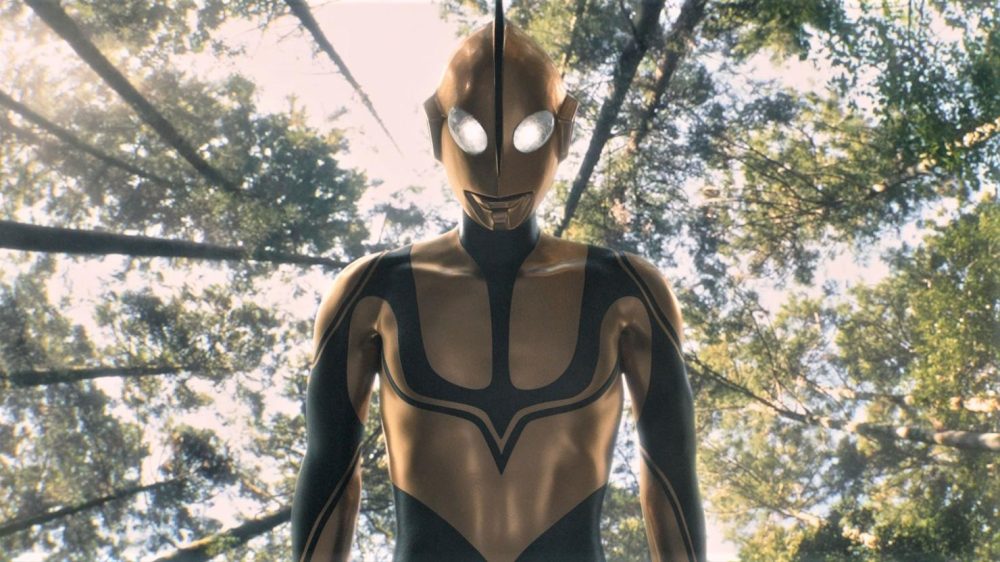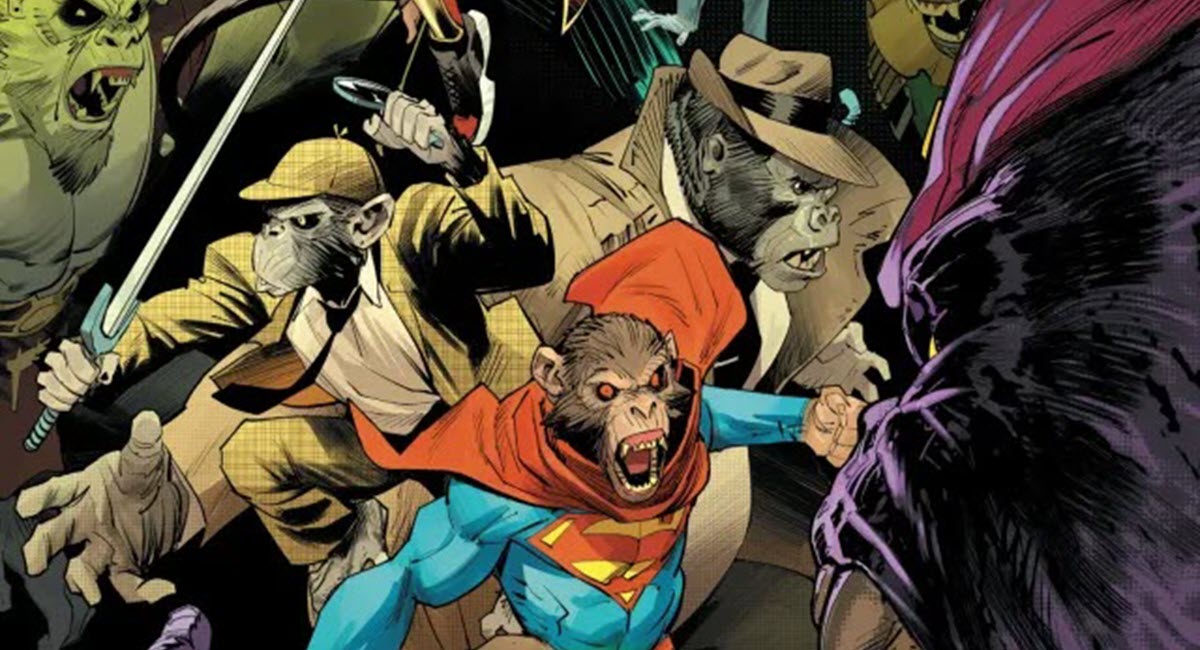For those unfamiliar with Ultraman’s vast library of series, movies, manga, anime, and games, breaking into its universe can feel daunting. I’d go as far to say that it’s the X-Men of its domain, a fascinating and rich story world that’s steeped in lore and continuity. Tsuburaya Productions (the company behind the license), for instance, accepts around 36 Ultramen as cannon or official. There are alternate versions, universes, and origins that build upon the infinite cosmic possibilities behind the giant kaiju-battling hero.
Shin Ultraman, like 2016’s Shin Godzilla before it, takes the iconic character back to the beginning with a few touchups here and there to make the story sing true in our context. No need for decades-worth of knowledge to enjoy it, though longtime fans will be rewarded with easter eggs and reveals that harken back to the classic series.
Directed by Shinji Higushi (co-director of Shin Godzilla alongside Hideaki Anno), the film follows the arrival of the giant silver extraterrestrial later to be named Ultraman to fight against the kaiju that have been appearing all over Japan. The giant’s arrival results in the accidental death of SSSP (S-Class Species Suppression Protocol) agent Shinji Kaminaga, an accident that gives Ultraman the opportunity to become Shinji so he can move around and interact with humans as one of them.
Ultraman’s presence opens the doors to other threats from space to attack Earth and attempt to gain control over it. The SSSP are then forced to keep abreast of the kaiju situation while also trying to contend with the arrival of intelligent alien beings with agendas of their own. The world falls into political chaos as individual countries vie for superior military readiness in case the aliens decide to wage war on them, or in case they decide Ultraman is more a threat than an ally.
It’s hard not to compare Shin Ultraman to Shin Godzilla, especially given they both come from the same creative team and so possess similar approaches to developing themes. Higushi and Anno used the threat of Godzilla in their previous Shin movie to poke fun at the ridiculousness of government bureaucracy and how politicians and agencies go on committee-creating sprees that end up keeping things from getting done rather than facilitating action.
In Shin Ultraman, Higushi and Anno (who wrote the script but didn’t co-direct this time around) set their sights on the self-destructive nature of global security. Instead of bureaucratic obsession from part of the government, Ultraman’s arrival instead jumpstarts a global arms race of sorts where treaties and alliances are pursued with the visiting aliens to protect against the possibility of war with the silver giant or, from the point of view of other countries, the potential Japan has to use these new beings to become the most powerful nation in the world.
This focus on the militarization of kaijus and aliens works to turn the ethical lens straight at humans and their fixation on war readiness and military prowess. To an extent, it echoes the types of fears that Cold War science fiction dealt in to understand the second half of the twentieth century. It’s easy to see Ultraman as a sentient atomic bomb that can be used just as much for good as it can for evil. It comments on the very thin line that divides global security from total destruction.
The message comes through thanks to the SSSP’s interactions with each other, mixing wit and quirkiness to get a laugh or two without compromising the more serious aspects of the story. In a sense, both Shin movies share a desire to satirize political behavior via giant monster fights. It works thanks to how smoothly characters bounce off each other and how impressive the action sequences end up being.
One particular highlight is Masami Nagasawa as Hiroko Asami, Shinji Kaminaga’s closest SSSP partner and the person that takes a more invested interest in deciphering Ultraman’s many mysteries. Her presence is magnetic and electric, capturing the enthusiasm of the human characters of the early Ultraman shows while also giving the story a sense of urgency on the situations the group gets involved in. Nagasawa even plays a role in one of the film’s weirdest sequences, in which she becomes a potential threat for a short while.
Hidetoshi Mishijima as Kimio Tamura also shines as the leader of the SSSP. He’s a sobering presence that isn’t all serious. He also injects the group’s interactions with humor and intensity all while still retaining a very focused demeanor, much like a noble agent that can see through the political machine to not fall into its many trappings.
Despite its biting criticism of humanity, Shin Ultraman never stops being a wildly entertaining ride. In fact, it makes a point of being as trippy and spectacular as it can be. Ultraman’s battles are expertly choreographed and edited, shot from a distance to give audiences a clear, first row-like look at the fights so that each light beam and each back kick can be felt with the force you’d expect from these colossal beings.
The CGI effects are as crisp and stylized as those from Shin Godzilla, opting for a consistently imaginative and self-indulgent fantasy aesthetic rather than an ultra-realistic one. This approach results in some awe-inspiring visuals that still manage to capture a real sense of tension and danger as quiet countryside areas and urban spaces get torn apart during fights.
And yet, it still captures the original series’ exuberance, where people dressed up as giants and monsters to duke it out in lavish, scaled-down city sets. It all goes to show just how much respect the filmmakers have for the license and how desperately they wanted to honor it.
Shin Ultraman is a triumph, pure and simple. It’s a movie that honors the source without missing the opportunity to play around with the various pieces that made the original so beloved. It leads with its messages and metaphors and never loses sight of them, but it doesn’t forget to have fun with every character, kaiju, and alien in the sandbox. It’s the type of movie that creates lifelong fans. So, get ready to hunt down those old Ultraman episodes (which are mostly available on YouTube) after leaving the movie theater. You’ll want more of what Higushi and Anno put up on the screen.













I remember watching the original U.S. localization of Ultraman when it popped up on our local UHF station (now a Fox affiliate) back in the late 1960s.
Comments are closed.